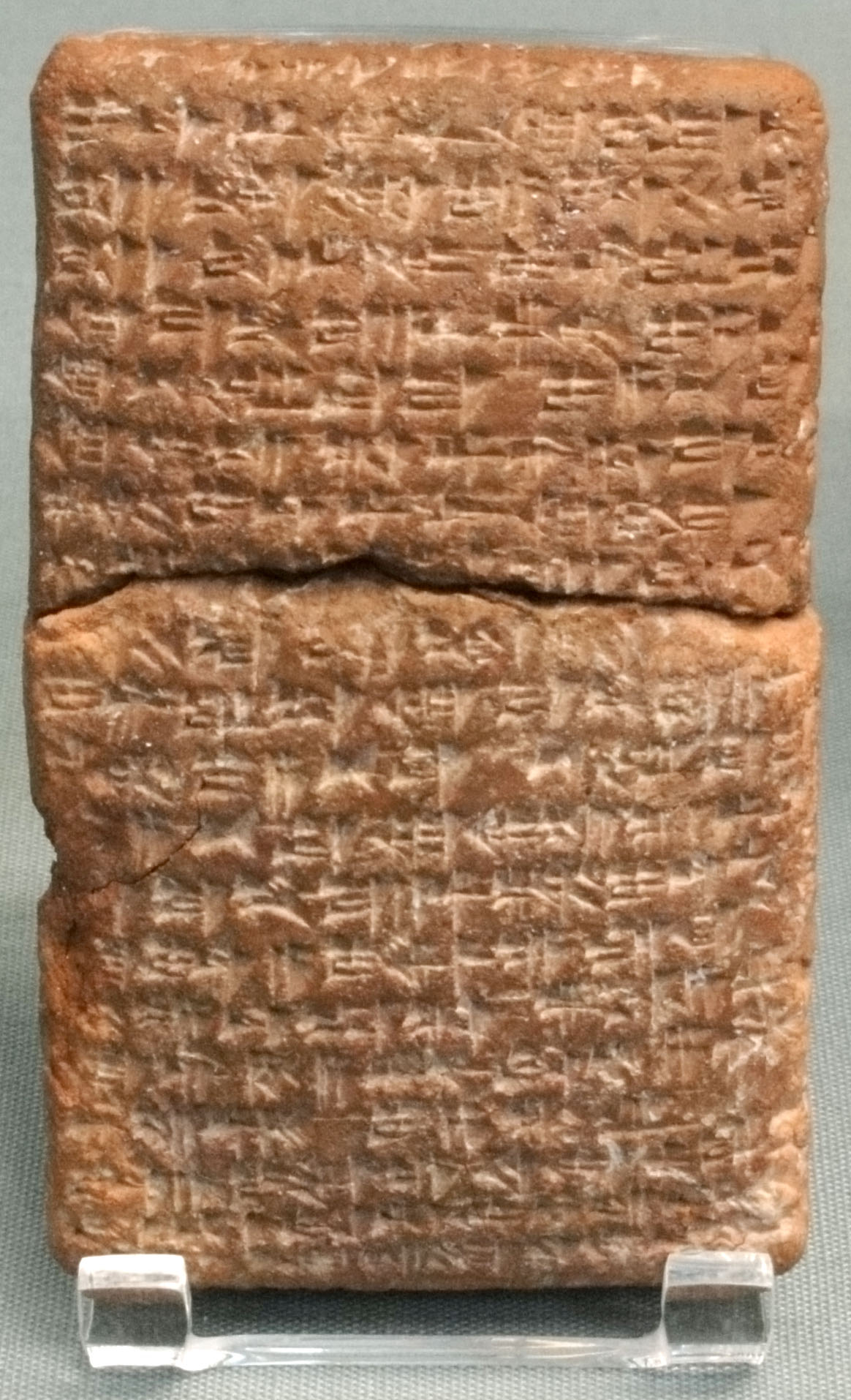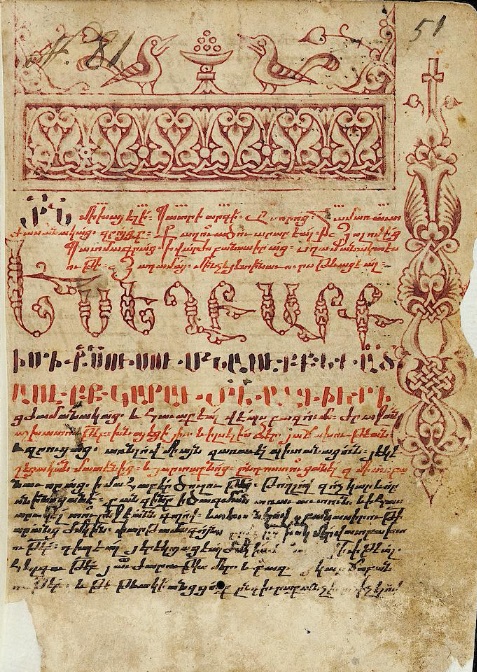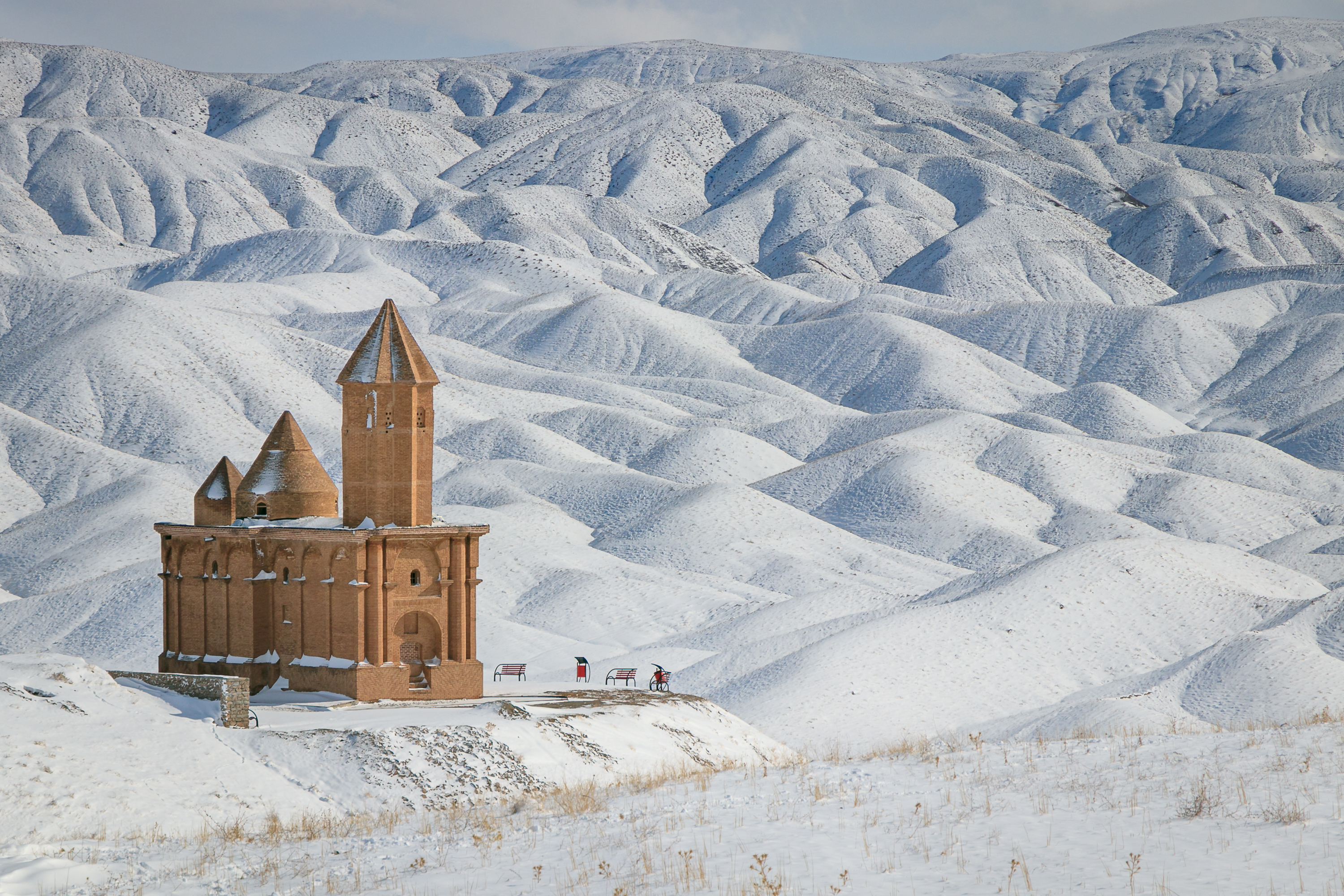|
Bishop Of Marash
The diocese of Marash was an ecclesiastical jurisdiction in eastern Cilicia with its seat in the city of Marash (ancient Germanicia, now Kahramanmaraş). By the sixth century, it was an autocephalous archbishopric, but it fell into desuetude after the Arab conquest in the seventh century. The archdiocese was never revived. Eudoxius of Antioch was the Arian bishop of Germanicia before becoming bishop of Antioch. Five bishops are known before the Arab conquest. In addition, 22 Syriac Orthodox bishops are known from the eighth to the thirteenth century. The city had an Armenian bishop at the time of the First Crusade (1096–1099). In 1100, the Armenian bishop gave assistance to Prince Bohemond I of Antioch against the Danishmendids. A Latin bishop was appointed sometime between 1104 and 1114. He was subject to the Latin patriarch of Antioch, but his primary purpose may have been more strategic than religious, since Marash was the seat of a frontier lordship subject to the Principalit ... [...More Info...] [...Related Items...] OR: [Wikipedia] [Google] [Baidu] |
Cilicia
Cilicia () is a geographical region in southern Anatolia, extending inland from the northeastern coasts of the Mediterranean Sea. Cilicia has a population ranging over six million, concentrated mostly at the Cilician plain (). The region includes the provinces of Mersin, Adana, Osmaniye and Hatay. Name The name of Cilicia () was derived from (), which was the name used by the Neo-Assyrian Empire to designate the western part of what would become Cilicia. The English spelling is the same as the Latin, as it was transliterated directly from the Greek form Κιλικία. The palatalization of c occurring in Western Europe in later Vulgar Latin () accounts for its modern pronunciation in English. Geography Cilicia extends along the Mediterranean coast east from Pamphylia to the Nur Mountains, which separate it from Syria. North and east of Cilicia stand the rugged Taurus Mountains, which separate it from the high central plateau of Anatolia, and which are pierced by a ... [...More Info...] [...Related Items...] OR: [Wikipedia] [Google] [Baidu] |
Lordship Of Marash
The Lordship of Marash was a territorial lordship in northeastern Cilicia between 1104 and 1149, centred on the city of Marash (today Kahramanmaraş). One of the lesser Crusader states, it played a major role in the defence of the northern frontier in the 1130s and 1140s under Lords Geoffrey and Baldwin. Its position became untenable after the fall of Edessa in 1146. Primary sources The lordship of Marash is mentioned in passing in the Arabic (Muslim) sources, such as Ibn al-Furat and Ibn al-Athir. Likewise, only one charter of a lord of Marash survives. Thus, the history of the lordship must be reconstructed almost entirely from Christian narrative sources in Armenian, Syriac, Greek and Latin. The most important of these is the Armenian ''Chronicle'' of Matthew of Edessa, continued from 1137 by Gregory the Priest. The ''Chronicle of the Kingdom of Little Armenia'' of Sempad the Constable also contains information. The Syriac ''Chronicle'' of Michael the Syrian and the anonymous Sy ... [...More Info...] [...Related Items...] OR: [Wikipedia] [Google] [Baidu] |
Roman Catholic Dioceses In The Crusader States
Roman or Romans most often refers to: *Rome, the capital city of Italy *Ancient Rome, Roman civilization from 8th century BC to 5th century AD *Roman people, the people of Roman civilization *Epistle to the Romans, shortened to Romans, a letter written by Paul, found in the New Testament of the Christian Bible * Ar-Rum (), the 30th sura of the Quran. Roman or Romans may also refer to: Arts and entertainment Music * Romans (band), a Japanese pop group * ''Roman'' (album), by Sound Horizon, 2006 * ''Roman'' (EP), by Teen Top, 2011 *" Roman (My Dear Boy)", a 2004 single by Morning Musume Film and television *Film Roman, an American animation studio * ''Roman'' (film), a 2006 American suspense-horror film * ''Romans'' (2013 film), an Indian Malayalam comedy film * ''Romans'' (2017 film), a British drama film * ''The Romans'' (''Doctor Who''), a serial in British TV series People * Roman (given name), a given name, including a list of people and fictional characters *Roman (surname ... [...More Info...] [...Related Items...] OR: [Wikipedia] [Google] [Baidu] |
Michael The Great
Michael the Syrian (),(), died AD 1199, also known as Michael the Great () or Michael Syrus or Michael the Elder, to distinguish him from his nephew, was a patriarch of the Syriac Orthodox Church from 1166 to 1199. He is best known today as the author of the largest medieval ''Chronicle'', which he wrote in the Syriac language. Some other works and fragments written by him have also survived. Life Early years The life of Michael is recorded by Bar Hebraeus. He was born ca. 1126 in Melitene (today Malatya), the son of the Priest Eliya (Elias), of the Qindasi family. His uncle, the monk Athanasius, became bishop of Anazarbus in Cilicia in 1136. At that period Melitene was part of the kingdom of the Turkoman Danishmend dynasty, and, when that realm was divided in two in 1142, it became the capital of one principality. In 1178 it became part of the Sultanate of Rûm. The Jacobite monastery of Mor Bar Sauma was close to the town, and had been the patriarchal seat since the 11th ce ... [...More Info...] [...Related Items...] OR: [Wikipedia] [Google] [Baidu] |
Council Of Nicaea (325)
The First Council of Nicaea ( ; ) was a council of Christian bishops convened in the Bithynian city of Nicaea (now İznik, Turkey) by the Roman Emperor Constantine I. The Council of Nicaea met from May until the end of July 325. This ecumenical council was the first of many efforts to attain consensus in the church through an assembly representing all Christendom. Hosius of Corduba may have presided over its deliberations. Attended by at least 200 bishops, its main accomplishments were the settlement of the Christological issue of the divine nature of God the Son and his relationship to God the Father, the construction of the first part of the Nicene Creed, the mandating of uniform observance of the date of Easter, and the promulgation of early canon law. Background Alexandrian controversies The major impetus for the calling of the Council of Nicaea arose in a theological dispute among the Christian clergy of Alexandria concerning the nature of Jesus, his origin, ... [...More Info...] [...Related Items...] OR: [Wikipedia] [Google] [Baidu] |
Germaniciana
Abbir Germaniciana also known as Abir Cella is the name of a Roman and Byzantine-era city in the Roman province of Africa proconsularis (today northern Tunisia). The city was also the seat of a bishopric, in the ecclesiastical province of Carthage, and is best known as the home town of the Pre Nicaean father, Cyprian, who was bishop of Abbir Germaniciana around 250AD. Location The location of Abbir Germaniciana is unknown but: *Adolf Harnack suggests it may have been near Membressa, in the Medjerda River Valley. *Today Henchir el Naam, a location west of El Fahs and north of Theveste near lake Sebkhet el Kourzia, has support as the location of Abbir Maius. This would place the city on the Meliane Wadi. *Others, citing Roman sources, claim in the vicinity of Theveste, as Abbir Germaniciana is mentioned by the '' Geographer of Ravenna'' as just ''the Germana'', and Antonine Itinerary as '' Ad Germani'', and both authors place it in the vicinity of Theveste. Which ever locat ... [...More Info...] [...Related Items...] OR: [Wikipedia] [Google] [Baidu] |
Titular See
A titular see in various churches is an episcopal see of a former diocese that no longer functions, sometimes called a "dead diocese". The ordinary or hierarch of such a see may be styled a "titular metropolitan" (highest rank), "titular archbishop" (intermediary rank) or " titular bishop" (lowest rank), which normally goes by the status conferred on the titular see. Titular sees are dioceses that no longer functionally exist, often because the territory was conquered by Muslims or because it is schismatic. The Greek–Turkish population exchange of 1923 also contributed to titular sees. The see of Maximianoupolis along with the town that shared its name was destroyed by the Bulgarians under Emperor Kaloyan in 1207; the town and the see were under the control of the Latin Empire, which took Constantinople during the Fourth Crusade in 1204. Parthenia, in north Africa, was abandoned and swallowed by desert sand. Catholic Church During the Muslim conquests of the M ... [...More Info...] [...Related Items...] OR: [Wikipedia] [Google] [Baidu] |
Armenian Sisters Of The Immaculate Conception
The Order of the Armenian Catholic Sisters of the Immaculate Conception (Armenian: Անարատ հղության հայ քույրերի միաբանություն) is a religious order of the Catholic Church founded on 5 June 1847 in Istanbul, Turkey. It was proposed in 1843 on the initiative of Archbishop Andon Hassounian who later became Catholicos and the first cardinal of Armenian ancestry. The Sisters had, around 1900, up to 30 schools in various countries in the Middle East, including Beirut, Cairo and Aleppo, Syria. In America they operate the Armenian Sisters Academy with schools in Philadelphia, Pennsylvania Philadelphia ( ), colloquially referred to as Philly, is the List of municipalities in Pennsylvania, most populous city in the U.S. state of Pennsylvania and the List of United States cities by population, sixth-most populous city in the Unit ... (1963), Boston and Los Angeles.Invisible Philadelphia: community through voluntary organizations - Page 59 Jean Barth ... [...More Info...] [...Related Items...] OR: [Wikipedia] [Google] [Baidu] |
Armenian Catholic Church
The Armenian Catholic Church is an Eastern Catholic Churches, Eastern Catholic particular church ''sui iuris'' of the Catholic Church. It accepts the papal supremacy, leadership of the bishop of Rome, and is therefore in full communion with the universal Catholic Church, including the Latin Church and the 22 other Eastern Catholic Churches. The Armenian Catholic Church is regulated by Eastern Canon law (Catholic Church), canon law, summed up in the ''Code of Canons of the Eastern Churches''. The head of the ''sui iuris'' Armenian Catholic Church is the Armenian Catholic patriarch of Cilicia, whose main cathedral and ''de facto'' archiepiscopal see is the Cathedral of Saint Elias and Saint Gregory the Illuminator, in Beirut, Lebanon. Armenian Caritas is the official aid organisation of the Catholic Church in Armenia. History The Armenian Apostolic Church, Armenian Church took issue with the 451 Council of Chalcedon and formally broke off communion with the Chalcedonian Ch ... [...More Info...] [...Related Items...] OR: [Wikipedia] [Google] [Baidu] |
Sultanate Of Rum
The Sultanate of Rum was a culturally Turco-Persian Sunni Muslim state, established over conquered Byzantine territories and peoples (Rum) of Anatolia by the Seljuk Turks following their entry into Anatolia after the Battle of Manzikert in 1071. The name ''Rum'' was a synonym for the medieval Eastern Roman Empire and its peoples, as it remains in modern Turkish. The name is derived from the Aramaic () and Parthian () names for ancient Rome, via the Greek () meaning the Anatolia. The Sultanate of Rum seceded from the Seljuk Empire under Suleiman ibn Qutalmish in 1077. It had its capital first at Nicaea and then at Iconium. It reached the height of its power during the late 12th and early 13th century, when it succeeded in taking key Byzantine ports on the Mediterranean and Black Sea coasts. In the east, the sultanate reached Lake Van. Trade through Anatolia from Iran and Central Asia was developed by a system of caravanserai. Especially strong trade ties with the Genoese forme ... [...More Info...] [...Related Items...] OR: [Wikipedia] [Google] [Baidu] |
1114 Marash Earthquake
The Marash earthquake occurred in the area of Marash during the early morning hours of November 29, 1114. It had an estimated surface-wave magnitude between 7.4 and 7.7 and an epicenter location in modern-day Turkey. The mainshock was preceded by two destructive foreshocks in August and November that same year. At least 40,000 people were killed in the earthquake; a number contested by historians due to the small population in the area at the time. These earthquakes were associated with seismic activity on the East Anatolian Fault. Earthquake The magnitude was estimated at 7.4–7.7 and assigned a maximum EMS-92 intensity of IX. The calculated moment magnitude was similar to that of the 6 February 2023 earthquake which measured 7.8. The mainshock and its foreshocks were associated with seismic activity along the East Anatolian Fault. Two large foreshocks were documented on 10 August and 13 November the same year. The 10 August foreshock destroyed several costal and fortified c ... [...More Info...] [...Related Items...] OR: [Wikipedia] [Google] [Baidu] |
Principality Of Antioch
The Principality of Antioch (; ) was one of the Crusader states created during the First Crusade which included parts of Anatolia (modern-day Turkey) and History of Syria#Medieval era, Syria. The principality was much smaller than the County of Edessa or the Kingdom of Jerusalem. It extended around the northeastern edge of the Mediterranean Sea, Mediterranean, bordering the County of Tripoli to the south, Edessa to the east, and the Byzantine Empire or the Armenian Kingdom of Cilicia, Kingdom of Armenia to the northwest, depending on the date. It had roughly 20,000 inhabitants in the 12th century, most of whom were Armenians and Greek Orthodox Christians, with a few Muslims outside the Antioch city itself. Most of the crusaders who settled there were of Normans, Norman origin, notably from the Kingdom of Sicily, Norman Kingdom of southern Italy, as were the first rulers of the principality, who surrounded themselves with loyal subjects. Few of the inhabitants apart from the crus ... [...More Info...] [...Related Items...] OR: [Wikipedia] [Google] [Baidu] |




